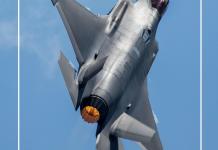In a new military innovation attempt, the US Navy is combining two new technologies, 3D printing and nanophotonics, to create precise models showing how submarines and other warships appear to radar.
Rafale Jets Not A ‘Game Changer’; India Still Needs To Catch-Up With China & Pakistan
“At that scale, an entire Virginia-class submarine (~150 meters) can be recreated to a length of 1.5 centimeters and can easily fit in a tabletop measurement setup,” according to a solicitation on the Small Business Innovation Research website.
Full size ‘pole model’ is a familiar concept for stealth aircraft research. Some companies including Advanced Technologies Incorporated have built full-scale models of the F-22, F/A-18 E/F and Comanche RAH-66 helicopter (and probably others) for radar testing.
However, scaled-down models have now come up as the process is costly and time-consuming. “A radar operating at 1/100th the wavelength of an actual search radar will see a 1/100th scale model exactly as the real radar sees the full-size version.
However, accurate 1/100th scale ship models currently take months to produce. Smaller might be better, but radar only works down to certain wavelengths,” wrote David Hambling, author and technology journalist and consultant based in South London.
He added that nanophotonics offers an alternative by building a sensor that works like radar, using antennas rather than lenses, but picks up visible light. “This helps in scaling down by a factor of 10,000.
The US Navy plans to use infra-red wavelengths as there are many materials which accurately reproduce the effect of radar wavelengths. After that models are expected to be built using 3D printing in a few hours and a few minutes to test. This is expected to make radar assessment of new designs much faster than at present.
Hambling explained two functions of the desktop radar range. “One would be determining the radar signature of any new proposed U.S. warship or modification – the proposal specifically mentions checking changes to submarine periscopes, or ‘photonics masts’ as they are now known,” he stated.
“The new approach would allow different designs to be tested rapidly before going ahead with production, without the need to make a full-scale mockup. This would ensure that a new design is stealthy and is as close as possible to invisible to radar,” he asserted.
The second function, he said is finding out what other nation’s ships look like to radar. “Even nuclear submarines sometimes have to use their periscope or any of the array of sensor masts which now adorn them,” said HI Sutton, editor of the CovertShores submarine website.
“If you can get a positive identification just from a fleeting radar contact with a mast, that could be extremely powerful in a tactical setting.”
To build the models for other nation’s ships can be easily gathered through photographs using satellite, drones, or other means, even before a vessel has even been launched. “Being able to predict a warship’s, or submarine’s, radar signature without having to encounter it at sea to gather data could be beneficial against navies which hide their best assets in port,” stated Sutton.




